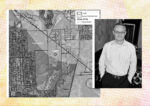A rush of de-annexation applications have hit the city of Austin since a state law took effect in September that makes it easier for developers to sidestep municipal land-use rules.
The city received 191 petitions for “direct release” from Austin’s extraterritorial jurisdiction, and at least 74 of them have been approved, the Austin Business Journal reported.
While most requests are for small parcels, some homebuilders and industrial developers are using the law to circumvent zoning rules.
Austin-based Milestone Community Builders has been one of the most outspoken users of the de-annexation law. The builder has filed for de-annexation for 775 acres near Buda and 500 acres near Hays.
The legislation, known as SB 2038, aims to remove red tape for developers building on the outskirts of cities and towns. Lawmakers argued this would relieve the housing crisis, and drummed up the legislation as municipalities, including Austin, were accused of development permitting that took months or years.
Several municipalities, including the central Texas towns of Hutto and Lockhart, have sued over the legislation, calling it unconstitutional and unsafe. Austin hasn’t joined the lawsuit.
“This pro-developer law attempts to strip the city’s local authority to keep our citizens healthy and safe,” Hutto officials said in a statement this month. “The law allows developers to create developments that negatively impact city residents.”
These extraterritorial jurisdictions, or ETJs, are outside city limits but within areas that cities have rights to annex. They often receive city services, such as police, fire, water, sewer and trash pickup.
SB 2038 enables developers to build on their own terms once land is de-annexed, the outlet said.
“When the petition complies with the law, the city has no discretion and must release the area,” Austin’s director of planning, Lauren Middleton-Pratt, wrote in a memo to Austin city council.
It’s unclear how much ETJ acreage the city of Austin stands to lose from the 191 petitions. De-annexation petitions have been filed for tens of thousands of acres in Central Texas, the outlet said.
—Rachel Stone
Read more



